Alberto Fujimori, who ruled Peru with an iron fist from 1990 to 2000 and became one of the country’s most divisive political figures, died on Wednesday at the age of 86.
It was her eldest daughter and former presidential candidate, Keiko Fujimori, who made the announcement at 18:26 local time. through your X account. “After a long battle with cancer, our father, Alberto Fujimori, has just passed away to meet the Lord. We ask those who loved him to accompany us with a prayer for the eternal rest of his soul.” The message ended with the names of his four children and a “thank you for so much, Dad.”
The former president died in Lima, at Keiko Fujimori’s home. Hours earlier, his personal doctor, Alejandro Aguinaga, assured reporters that he was fighting for his life.
The last time he was seen in public was in early September, when he was leaving a Lima clinic with his youngest son Kenji, after undergoing routine tests.
The first son of Japanese parents to become head of state of another country in the world by popular vote, he was elected president of Peru three times from 1990 to 2000. Born in Lima in 1938, he spent his last months of life in freedom after benefiting from a humanitarian pardon that allowed his release in December 2023 after spending 15 years in prison on murder charges.
During his terms in office – the last of which lasted less than a year – he implemented harsh economic adjustment measures, but maintained high levels of popularity. However, in 2000, after strong international criticism for human rights abuses, he fled to Japan and resigned by fax.
The former president was later sentenced to 25 years in prison in 2009 on murder charges that accused him of being responsible for the creation and financing of a clandestine military squad during his administration that killed at least 25 people—including university students and residents of a neighborhood in the capital, including a child—who were considered former Shining Path guerrillas.
His rapid rise to power occurred amid the economic ruin that Peru found itself in in July 1990, at the end of the five-year government of his predecessor Alan Garcia. In August of that year, monthly inflation reached 397% and the country endured a decade of bloody internal armed conflict between the security forces and the terrorist groups Shining Path and the Tupac Amaru Revolutionary Movement.
In May, Fujimori said on social media that doctors had They detected a malignant tumor in the tongue, where there had already been a cancerous lesion for several years.
In June, he suffered a hip fracture product of a fall and underwent surgery. Weeks later Keiko Fujimori announced that her father would be a candidate for the country’s presidency in 2026.
Asked if he still intended to run for president, as his daughter had said, he said with a smile: “We’ll see, we’ll see.”
“The Chinese”
They called him “el Chino” because of his slanted eyes and dark complexion, which brought him closer to the majority population of Peru: the mestizos and indigenous people.
His parents, born in the Japanese province of Kumamoto, worked as seamstresses, tire repairmen, rose distributors and owners of a poultry farm to support the family’s three sons and two daughters.
During his campaign, he preached with his high-pitched voice a government of “the most capable and of impeccable conduct.” On one occasion, the newspapers published a photograph of him dressed as a karate fighter with a black belt and breaking a brick with his thin hands. Days later — in April 1990 — before the New York Times He confessed that he never learned karate and that the brick was already broken in advance.
Twelve days after coming to power, at age 52, he implemented the drastic measures he had promised not to use during his campaign to combat the highest hyperinflation in the history of Latin America, at 397% per month, according to calculations by Steve H. Hanke, a professor of applied economics at Johns Hopkins University and an expert on inflation around the world.
In a televised address, his finance minister announced that the price of gasoline would rise 32-fold, along with other basic food products. The cost tripled overnight. Queues for food soared and police arrested some 10,000 Peruvians that weekend for looting shops.
Milestones of his government
On April 5, 1992, Fujimori announced in a televised address the closure of Parliament, the reorganization of the judicial system, and the beginning of an “emergency government” whose objectives would include drafting a new Constitution to replace the 1979 Constitution, which prohibited immediate re-election.
“Dissolve, dissolve,” was the phrase Fujimori used to repeatedly announce the so-called “self-coup” and it remained in the memory of Peruvians for many years.
His popularity increased after a group of police investigators, who received additional support from the United States embassy, captured the leader of the Shining Path, Abimael Guzmán, and key members of his leadership, who from 1980 to 2000 caused more than 12,000 murders, on a Saturday night in September.
Years later, Fujimori capitalized on the rescue of the Japanese ambassador’s residence in Lima taken by rebels of the Tupac Amaru Movement. On that day, army soldiers rescued 72 of 73 hostages alive and extrajudicially executed the rebels. An image of Fujimori in a bulletproof vest and military boots, victoriously strolling through the liberated residence, was broadcast around the world.
Questioned authoritarianism
According to various scholars, Fujimori inaugurated a new type of authoritarianism in the region: he governed with an authoritarian regime with a democratic facade and great popular support.
From the shadows, his spy chief Vladimiro Montesinos — a former drug lawyer and expelled army officer — directed an intelligence system that, using public money, favored Fujimori and cleared the way for any kind of opposition by bribing legislators, judges, prosecutors and media owners.
His lust for power led him to be re-elected in 1995, when he won by a landslide. He was re-elected in 2000, despite accusations of fraud, but his third term was short-lived. At the end of that year, a video was released showing his adviser Montesinos bribing an opposition legislator. This unleashed a wave of protests that led to his downfall.
Fujimori left the country and took refuge in Japan, from where he resigned from the presidency via fax.
Nearly a decade after his government ended, Human Rights Watch described his administration as “a mafia regime” that held on to power through corruption and the manipulation of democratic institutions.
Accusations
The independent press discovered that during his government, a clandestine military squad financed with public money murdered 15 residents during a party – among them an 8-year-old boy – as well as nine university students and a professor who were considered members of the Shining Path.
In 1994, he divorced his wife, Susana Higuchi, after she denounced her brothers-in-law for enriching themselves with clothes donated from Japan. Fujimori stripped her of her title of first lady and gave it to her 19-year-old daughter, Keiko. After the separation, his children stayed with him and Keiko devoted herself to politics, running for president in 2011 and 2016. She now leads a centre-right party that claims her father’s achievements and has a majority in the unicameral parliament.
In 2005, Fujimori traveled to Chile and a court in that country authorized his extradition to Peru two years later. Upon his return, the trial became historic: it lasted 15 months and polarized the country. Fujimori was the first democratically elected president to stand trial for human rights violations. And although he defended himself by saying that it was political revenge, he was accused of being the indirect perpetrator of 25 murders and was sentenced to 25 years in prison.
He was also convicted of corruption for making an illegal $15 million bribe payment to Montesinos in the final days of his administration. In January 2015, he received an additional sentence for using state resources to finance newspapers that supported his second re-election, but the conviction was later withdrawn because the judge who reviewed it said he found no conclusive evidence.
Pardon
Fujimori was due to be released in 2032 at the age of 95, but former President Pedro Pablo Kuczynski (2016-2018) granted him a humanitarian pardon a few hours before Christmas 2017 due to his failing health.
Thousands protested because Fujimori, then 79, was considered the prisoner who received the most attention: he was the only inmate in an 800-square-meter prison, and he was allowed to paint, receive visitors, grow flowers and listen to operas.
The victims’ families asked the Inter-American Court of Human Rights to annul the pardon, but the court left the case in the hands of the Peruvian Supreme Court.
He had to attend a new trial in which he was accused of being the indirect author of the massacre of six other peasants tortured, killed and burned during his government. The prosecutor asked for a new sentence of 25 years in prison for the massacre.
Finally, in December 2023, the Constitutional Court revived the 2017 pardon for suffering from hypertension, irregular heart rate and risk of tongue cancer and ordered his release.
[Con información de AP]
Connect with the Voice of America! Subscribe to our channels YouTube, WhatsApp and to newsletter. Turn on notifications and follow us on Facebook, X and Instagram.

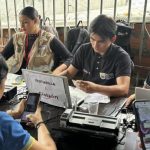
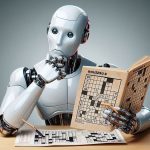








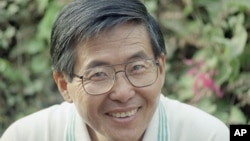
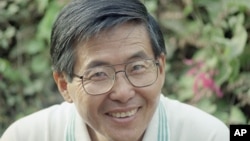
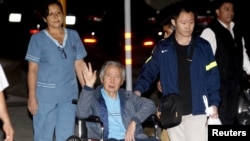
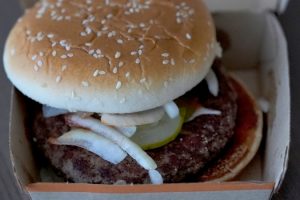
Add Comment